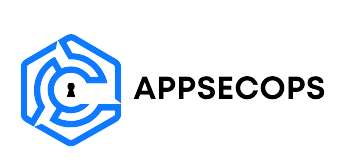In the fast-paced world of software development, where speed and innovation are critical, security cannot afford to be an afterthought. Traditional approaches to application security often involve testing and fixing vulnerabilities at the tail end of the software development lifecycle (SDLC), resulting in costly delays, inefficiencies, and elevated risks. This is where shift-left security emerges as a game-changer. By integrating security into the earliest phases of development, organizations can detect and address vulnerabilities before they escalate, reducing risks and costs while improving overall software quality.
When combined with AppSecOps, shift-left security becomes a powerful strategy, blending the principles of DevOps agility with robust security practices. Let’s explore what shift-left security means, its importance in the context of AppSecOps, and how this approach transforms the way modern organizations build secure, reliable software.
What Does Shift-Left Security Mean?
The term “shift-left security” refers to the practice of integrating security measures earlier in the SDLC, moving them to the “left” of the traditional timeline. Instead of treating security as a separate phase at the end of development, shift-left security involves embedding security practices into the design, development, and testing stages.
This approach encourages collaboration between developers, security teams, and operations teams to proactively identify and mitigate vulnerabilities before code is deployed. By detecting flaws early, teams can prevent costly rework and ensure vulnerabilities are resolved when they are easiest to fix.
The Role of AppSecOps in Shift-Left Security:
AppSecOps (Application Security Operations) takes the principles of DevSecOps a step further by making application security a continuous, automated, and collaborative process across the entire SDLC. In the context of shift-left security, AppSecOps facilitates the integration of tools, processes, and practices that empower teams to catch vulnerabilities as soon as they arise.
Here’s how AppSecOps supports shift-left security:
- Automation of Security Testing: AppSecOps integrates automated tools such as static application security testing (SAST) and dynamic application security testing (DAST) into the CI/CD pipeline, enabling early and frequent security checks.
- Collaboration Across Teams: By breaking silos between security, development, and operations teams, AppSecOps encourages a culture of shared responsibility for security from the very beginning.
- Real-Time Feedback: Developers receive instant feedback on security issues within their code, helping them address vulnerabilities without disrupting workflows.
- Continuous Monitoring: AppSecOps emphasizes ongoing vulnerability assessments throughout the lifecycle, ensuring that applications remain secure even after deployment.
Why Shift-Left Security Matters?
1. Identifying Vulnerabilities Early Saves Costs:
Fixing a vulnerability during the design or coding phase is significantly cheaper and faster than addressing it after deployment. Studies have shown that the cost of remediating a security flaw can increase by up to 100 times if it’s discovered after production. Shift-left security, supported by AppSecOps, minimizes these expenses by catching issues early.
2. Reducing Security Risks:
Proactively addressing vulnerabilities during development reduces the risk of exploitation in production. This approach ensures that security is not a bottleneck, allowing businesses to maintain customer trust and avoid data breaches that can damage reputation and lead to legal penalties.
3. Enhancing Software Reliability:
When security is integrated into the earliest stages of development, it improves the overall quality and reliability of the software. Bugs and flaws are addressed before they become ingrained in the system, resulting in more stable and resilient applications.
4. Accelerating Time-to-Market:
By catching vulnerabilities early and automating security testing, teams avoid delays caused by last-minute fixes. This enables organizations to deliver secure applications faster, without compromising quality.
Conclusion:
Shift-left security, powered by AppSecOps, transforms the way organizations approach application security by embedding it into every stage of the SDLC. This forward-thinking strategy not only reduces costs and risks but also accelerates development timelines and improves the quality of applications. In today’s rapidly evolving digital landscape, adopting shift-left security with AppSecOps is no longer optional—it’s a necessity for organizations aiming to build secure, reliable, and high-performing software. By prioritizing security from the start, businesses can stay ahead of threats and deliver innovation without compromise.










